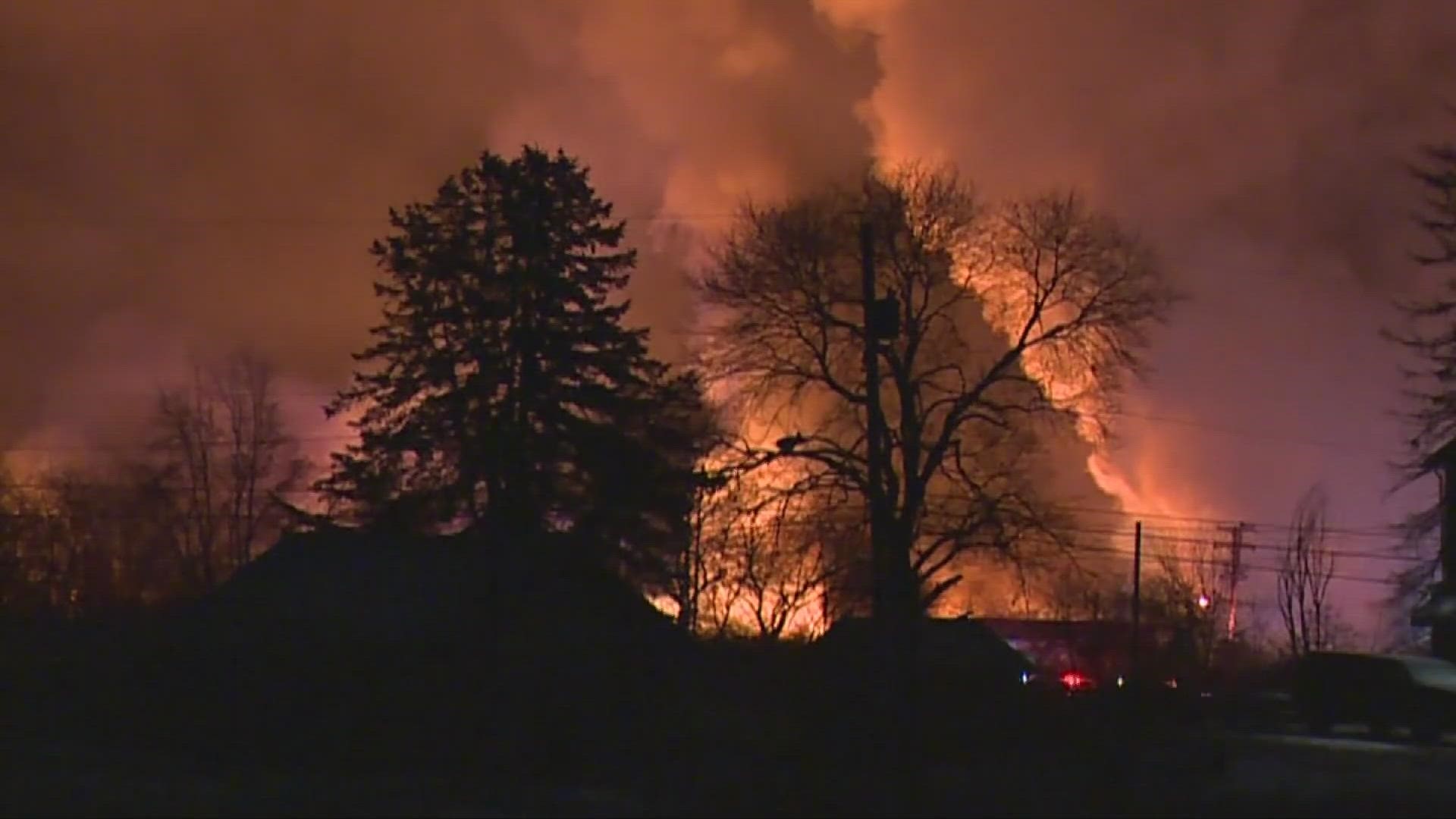EAST PALESTINE, Ohio — One month ago, the skies above East Palestine were painted with flames and coated with smoke as 38 railcars from the now infamous train 32N derailed. It would be days before the full consequences were realized.
"I was doing rounds like I normally do at work when I heard a loud bang. I just thought trains buckled in on themselves," East Palestine resident Brian Festa told 3News the day following the wreck. "The owner to my work shows up and asks me if everything's OK. I say, 'Yeah,' and he takes me to the back and I just see the train burning away."
Feb. 6 marked the controlled release of chemicals, creating the now symbolic black plume of smoke that hovered over onlookers. We now know it was mostly vinyl chloride that was burned that day, and the full impact of the burn is still being studied.
In a press conference today, Texas A&M and Carnegie Mellon University researchers say elevated levels of acrolein make it a "chemical of potential concern."
"For acrolein, you really need to monitor and make sure the levels continue to go down or that they are actually going down," Weihsueh Chiu, deputy director of the Texas A&M Research Center, said.
We are also getting a first look at the health impacts of the derailment and subsequent controlled release. With surveys conducted on 168 people at the East Palestine Health Assessment Clinic, 74% of respondents saying they have headaches, 64% anxiety, 61% are experiencing coughing, 58% fatigue, and 52% are reporting skin irritation.
And with visits from politicians and activists, East Palestine residents have a clear message: Please listen to us.
"Since we've been from the evacuation to now, we've had many symptoms and respiratory problems and fighting vertigo," villager Giovanni Irizarry explained. "I had to fly my mom to California because she couldn't breathe here anymore."

